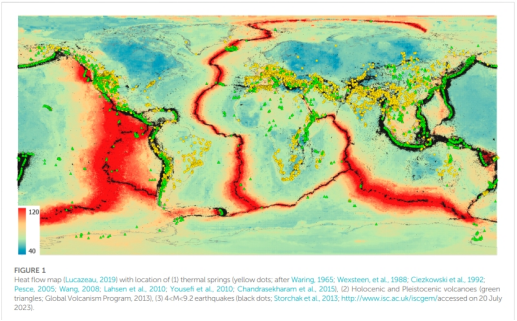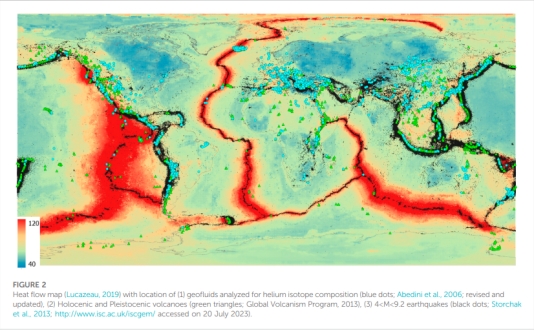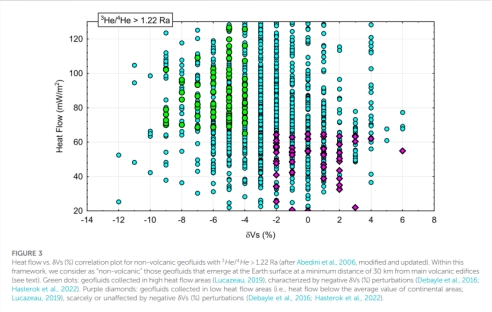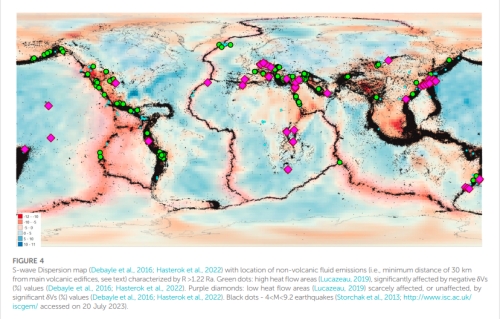Geofluids as a possible unconventional tool for seismic hazard assessment
In recent decades, phenomenological methods known as Recognition of Earthquake-Prone Areas (REPA) were set up for identifying potential sites of powerful earthquakes. The information on potential earthquake sources provided by the REPA method is an essential part of seismic hazard assessment methodology. For the ?rst time, Giovanni et al. (2023) have combined global-scale information on the geographic occurrence of geo?uids with global-scale information on earthquake occurrence, heat ?ow distribution, and S-wave dispersion, to gain insights into the evolution of local stress-strain fields. They focused on areas characterized by the occurrence of thermal waters and/or by the release of deep-seated gases, as traced by the isotope composition of associated helium. They noticed that the geographic distribution of these geo?uids could serve as an indirect indicator of crustal permeability anomalies generated by crustal deformation procedures. Their study proposes adding geo?uids to the list of fundamental geological parameters to be considered in hazard assessment research.
Detailed information can be found in the original paper by https://www.frontiersin.org/articles/10.3389/feart.2023.1286817




